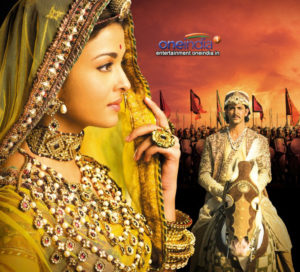The vilification of the Hindi film industry is misplaced and destructive. Not only do movies earn enormous profit, they employ lakhs of people and give work to ancillary industry. On top of that, they are repositories of our syncretic culture
Bollywood is in the doldrums and it is not just due to Covid-19.
There is a huge movement, mostly on social media, egged on by some hysterical loud-mouth anchors, to condemn everything associated with Bollywood.
Every actor, producer, director, young and old, is being shown up as a villain. An evil wind is blowing which is out to paint the whole film industry black, though it provides sustenance to thousands of artistes and technicians. The ‘image makeover’ projects it as an adda for drugs, lust, greed, over-ambition and everything evil.
But a report of the Motion Picture (Dist) Association of India Pvt Ltd prepared jointly by FICCI and Producers Guild of India in 2017 should be an eye-opener on the kind of impact the industry makes in the lives of those who are dependent on it.
What is being contemptuously called ‘Nach Gana’ (Song and Dance) industry is known as the Media and Entertainment (M&E) industry in economic jargon and is estimated at Rs 1.26 lakh crore ($19.4 billon) in India. While this represents only 1% of the country’s GDP, it places the sector above India’s consumer durables and online retail industries.
Television, film, and OTT industries are estimated at Rs 75,000 crore ($11.5 bn), representing a majority of the overall M&E market. India has a large Cable & Satellite (C&S) base of 155 million homes.
The country is the largest producer of films and the fourth-largest theatrical box office market in the world. In 2017 it had nearly 30 active content OTT platforms (as against communication OTT platforms). The number of OTT platforms must have gone up much higher in the last three years.
The film, television, and OTT industry generate a direct gross output of Rs 10.1 lakh crore ($15.6 bn), and directly provide employment to 7.4 lakh people. Accounting for indirect impact, the industry generates a total gross output of Rs 2.17 lakh crore ($33.3 bn) and a total employment of 23.6 lakh (2.36 million).

At the same time, it spends on several items that are produced by other sectors — such as cameras, lights and other equipment, hotel accommodation for crew, transportation to locations etc.
“Further, the industry generates core raw material for several ancillary sectors such as music (which in turn drives radio), magazines and books, merchandised products, amusement parks, and gaming. The music industry in particular, depends on films for over 80% of its revenue,” reads the report.
The films, television, and OTT industry also plays a significant role in inducing demand for products and services across categories – by what they call ‘creating aspiration value’. For instance, the study quotes the example of films like 3 Idiots which may not have employed many people but has promoted tourism in a big way.
The climax scene of the movie which was shot on the banks of Pangong Lake, a scenic mountain lake, at a height of 4,350 metres above sea level, which can be reached after a 5-hour drive from Leh (capital and entry point to Ladakh) over rough and dangerous mountain roads.
The popularity of Pangong lake soared after the film. Props such as the mustard-yellow scooter used by the lead actress in the movie, and life-size cut-outs of the lead actors can be seen on the banks of the lake. Several restaurants and cafes in the area have been named after the movie and its characters.
Tourist arrivals in Ladakh have gone up to 2.4 times the average number before the movie’s release. Then there are the multiplexes and PVRs that have their own economy boosters by way of generating food and beverage sales within their own premises, and also leading to increased footfalls to the nearby malls and neighbourhood market.
The much-maligned entertainment industry acts not as just as an important means to generate demand, but also to create and shape the perception of India and Indian products, services, and lifestyle.
In 2017 Bollywood grew 27% and it was predicted that there would be an estimated increase in revenues of Rs 156-191 billion by 2021.
But all that looks like a distant dream today due to the advent of deadly Corona.
The restrictions imposed by the Government for further shooting of films and TV serials, till Corona lasts, are further going to suffocate the growth of Bollywood.
The first code of conduct worked out between the Maharashtra Government and the Producers Guild of India to resume shooting clearly mentioned that physical distancing of six feet would have to be maintained at all costs. Which means no more hugging, no kissing and of course no rape scenes which would put the villains out of job. So much so that even handshakes with colleagues and sharing of cigarettes is not permitted.
It seems that directors and producers would have to resort to the age-old methods of filming by showing flowers and butterflies to express their love making. Instead of cosying up to to each other to express their feelings, they could now be singing ‘Mere piya gaye Rangoon, kiya wahan se telephoon‘. Of course, the mobiles could make their task easier but what about the audiences and the lyric writers? It’s going to be total mayhem.
Besides maintaining physical distancing of six feet, the costs are going to rise further because make-up artistes will not be allowed to share the items they use, including wigs, for fear of contamination.
But the most contentious issue during this crisis has been the initial advisory that crew above the age of 60 would not be allowed to work.
Many artistes including actors Kanwaljit Singh and Surekha Sikri protested that this was unfair. The government order had to be modified when on August 7, the Bombay High Court quashed and set aside conditions imposed by the Maharashtra government through two Government Resolutions (GR), which barred any cast or crew members above 65 years at the shooting site of fiction or non-fiction programming during a pandemic.
This happened when actor Pramod Pandey (69) along with the Indian Motion Pictures Producers Association (IMPPA) went to court seeking to quash and set aside conditions imposed by the government on May 30.
The Court observed that the decision to prohibit artistes above 65 years of age from working at shooting sites was discriminatory.
It asked the Maharashtra government that if it did not stop a senior citizen from opening a shop and sitting there all day, on what grounds was it stopping artistes from working.
There were discussions and appeals from both sides. After hearing them out, the court found that the order of the government failed to satisfy requirements of Article 14 (Right to Equality) of the Constitution and observed that restrictions on elderly persons should be uniform, regardless of sector or activity prior to May 30.
Justice Kathawalla, who wrote the 37-page judgement for the bench, observed, “If there is no general prohibition on persons above the age of 65 years from working or practicing their trade in those sectors and businesses which are allowed to operate, an age-based prohibition in only one industry, namely the film industry/television/OTT, without any material to support its differential classification, would constitute an unreasonable restriction.”
In view of this, the bench said, “We are of the view that the impugned condition that seeks to apply to persons above the age of 65 who are engaged in only one occupation or trade but not to others of the same class, cannot be said to be a reasonable restriction.”
Fans of the Bollywood icon Amitabh Bachchan must have heaved a sigh of relief after this as they would still be able to watch their favourite star who has defied age to give performances that receive worldwide acclaim. And he is not the only one saying “Buddha hoga tera baap” even though he and his entire family has been through the trauma of being infected with the virus and coming out safe.
There are a lot of actors both male and female for whom acting is their sole source of earning. More than a source of income it has been their persona that gets them likes in millions, much like actors across the globe.
Bollywood is not just about Nach Gana as is being made out through a virulent, systematic campaign. The glamour industry has given performers who have mesmerised the world through their sheer perfection and mastery of the craft of entertainment. Corona will die once the vaccine is discovered but Bollywood, which stands out like a rock in every crisis faced by the country, is going to survive and prosper.
An industry where a Mohammad Rafi gives a soulful rendering of ‘Man Tarpat Hari Darshan ko Aaj‘ or a Yusuf Khan (Dilip Kumar) can enchant viewers by singing ‘Ram Chandra Kah Gaye Siya Se‘ is a trustee of India’s social and cultural ethos. It cannot be allowed to be vandalised by a few whose sole agenda is destruction.





